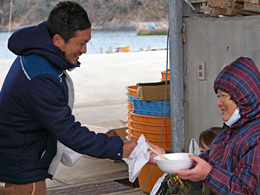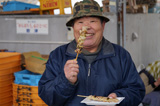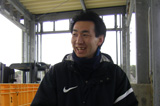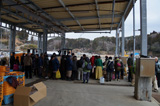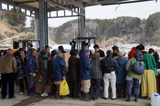On March 11th, 2011 at 2:45 local time, an earthquake struck 130km east southeast of the Oshika Peninsula, triggering a massive tsunami that put the death toll at 15,782, with 4,086 missing, in the Pacific coast of Tohoku-Kanto area. In Tanoura, 55 houses out of 98 collapsed, including 48 demolished, 6 flooded and 1 partially destroyed. 14 people were killed and 3 missing.
The tsunami exceeded 10 meters in height and swept away everything in its path, including fish farming facilities, ships, fishing tools, and buildings. Most of the debris from the tsunami sank to the seabed, creating a mountain of debris almost one meter below the surface.
Even so, he will never give up. Little by little, he attempts to set a course for recovery.
Support for recovery from the Great East Japan Earthquake, in Tanoura, Minamisanriku, Miyagi Prefecture
Top page » Support for recovery from the Great East Japan Earthquake, in Tanoura, Minamisanriku, Miyagi Prefecture
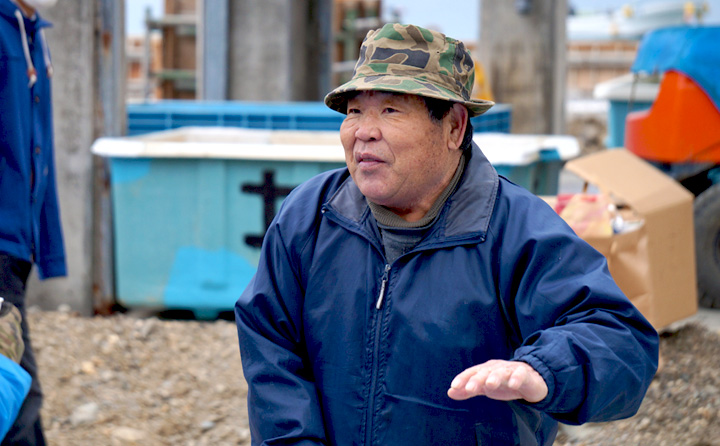


■ Yoshinobu Chiba, fisherman in Tanoura, Minamisanriku, Miyagi prefecture
He is a victim of the tsunami and earthquake that occurred on March 11 2011. He works for the recovery of the town to encourage other victims.
After finishing middle school, he started his career as a fisherman despite his parents' opposition. He started off on a saury ship and worked in a tuna ship. He currently runs a seaweed/sea squirt farm with his son.

Members of the team, including Yoichi Koyama from a manjū shop in Ōme, Tokyo, headed to Minamisanriku on April 19th - a month after the March 11 Great East Japan Earthquake. They spoke to each victim to figure out how to meet individual needs.
The team visited the affected area more than 30 times to provide resources and food.
It is important to think and act for the people who need help.
*The article below is from 'The life in the ocean - the story told by a fisherman in Tanoura,' published by the Tanoura fan club
Living in the ocean means not only appreciating what nature gives us but knowing fierce nature to take its course of destruction upon mankind.
This catastrophic event made us think of the life in the ocean. I would like to introduce the people in Tanoura who have coexisted with nature.
Yosinori Chiba, fisherman aged 73
'I saw the exposed seabed after the tide ebbed away.'
Yoshinori Chiba showed me the back of the warehouse where fishing tools are kept. From there, the entire Tanoura bay can be seen. On that day, he saw the tide rushing out from 20 meters above sea level. The scenery changed all at once. He sat on the concrete block left on the beach and started talking about that day while looking at the calm ocean.
'I was removing seaweed stems when the earthquake hit. The quake was felt as a long shaking. I rushed to the port and started removing a ship and fishing tools from the sea. The tide receded within 30 minutes. I found it dangerous to stay near the ocean so I jumped into a car to evacuate. We know when a tsumani comes from the way the tide recedes. 'Run! Quickly!' I screamed. When I arrived at the warehouse, the wave engulfed the Matsushima islands. Houses were being washed away. Everything happened in 22-23 seconds.'
He stopped talking and looked at the ocean. It must be painful for him to talk about that day. It has been more than 2 and half years since the disaster. Time passes by fast, but recovery is a slow process and requires more support.
Members of the team expressed their wish to support the victims who contiunue to live in the affected area, without forgetting this catastropic event.
We hope that our support will connect the people all over the world.

















